What is rhythm in photography and how to set it
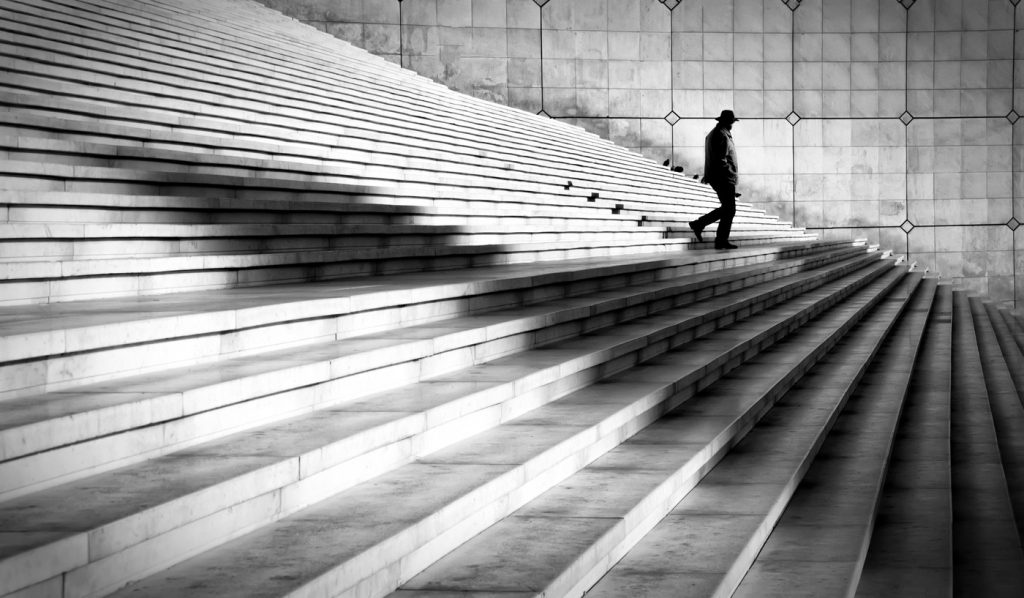
Rhythm is something found in all creative arts. For example we tap our toes and snap our fingers to the rhythm of music. We find rhythm in poetry and stories. There is also a rhythm to tell a joke.
And rhythm also exists in photography. There is a visual rhythm that brings the photographs to life. Rhythmic photography is about visual storytelling and composition building. It is the beating heart of the images.
What is rhythm in photography?
Just like rhythm in music, rhythm in photography gives structure and stability to images. Rhythm can keep the viewers gaze at a steady pace. Or it can speed up as your eyes move across the image.
Rhythmic photography has elements that repeat or echo throughout the image. It could be a series of shapes that repeat to create a pattern. Or you might have multiple subjects appearing at different points in the frame.
Bringing rhythm to photography can help you make informed decisions when it comes to your composition. You can think about how you want your photographs to flow or feel. And you can add elements that punctuate your images, like a drummer adding a flourish of cymbal hits.
Rhythm in photography is not limited to a particular niche. You'll find rhythm in street photography, architecture and photojournalism. Portrait and landscape are also examples of rhythmic photography.
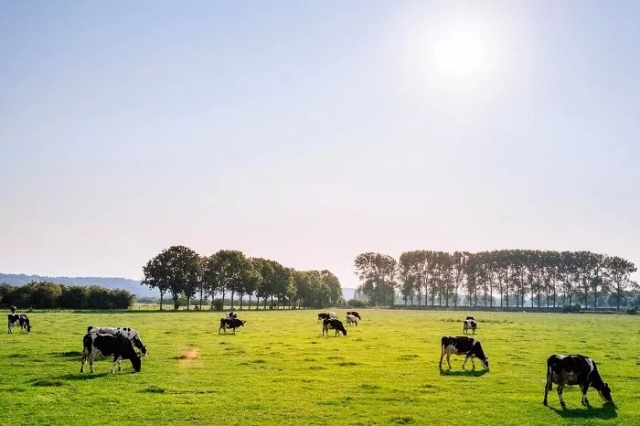 © Leon Ephraim
© Leon Ephraim
How to set the pace?
Rhythm is created in photography by framing objects of the same color and size, the number of which is greater than three, sequentially in photo frames. Sequential photographs form the basis of rhythm in photography. There are some points that should be considered in the process of applying rhythm in photography. One of the rules to keep in mind in this regard is to shoot with a low aperture instead of the large aperture.
In rhythmic photography, it is essential that objects of the same colour, size and shape are taken in sequence. It will be advantageous to choose a low aperture to create rhythm in the photograph. Since using a large aperture will create a blurry effect on the image, it won't work for someone who wants to apply rhythm in the photo. To apply it correctly, the entire subject must have the same sharpness. For this, it is correct to use aperture at values like f16, f22. Of course, as you improve your photographic technique, you master these modes better.
You can create a smooth rhythm by photographing the same object, such as electric poles or fence posts, in a specific and regular way. You can capture the rhythm alternating with images containing circular movements. Sea waves, fountains and fireworks give photographs a sense of fluid rhythm.
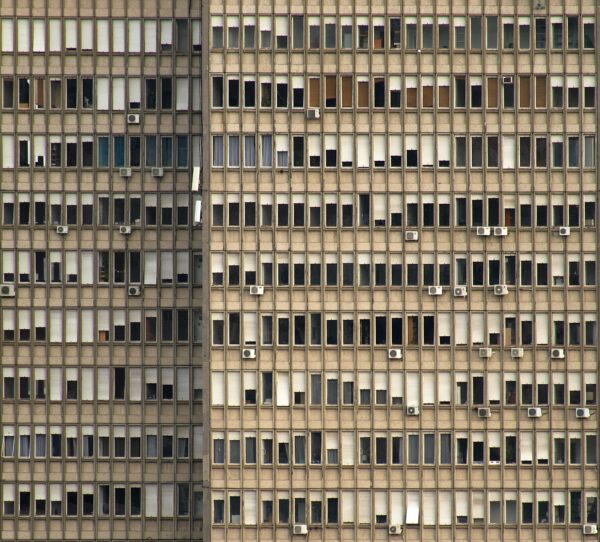
Don't have any other objects in the frame that can disturb the balance of the rhythm!
If you want to use the photographic rhythm technique, which is based on creating emphasis by repeating objects, there should be no objects or subjects other than the repeating object in the frame you shoot. For example, when shooting repetitive red signals, the image of a dog in the background will interrupt the rhythm. It is useful not to overlook this point in your photographic compositions. Rhythm increases the visual enjoyment of photography.
The rhythms and grooves of photography
Now I'm going to walk you through some of the beats and grooves of rhythm photography so you can add rhythm to your photography.
Regular pace
The easiest rhythmic structure to identify in photography is the regular rhythm. A photograph with this type of rhythm will have many identical elements repeating themselves. They repeat at regular intervals, giving you a steady, standard beat.
Elements can be geometric shapes or concentric circles . Or they can be humans or animals located in rows or diagonals.
Such elements give structure to the composition. The lines and shapes created by the rhythmic elements lead the eye in a certain direction. And they can focus your attention on a specific area of the image.
In the architectural image below, rhythm is created by the repeating shapes. They are identical in shape and are equally spaced. This creates a constant visual rhythm.
The fact that the shape repeats itself so many times sends the eye in different directions and gives the photo a fast pace.
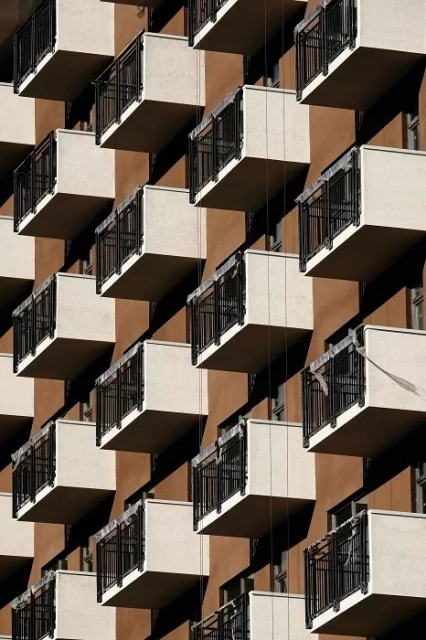 © Roma Kaiuk
© Roma Kaiuk
Random rhythm
A random rhythm in photography is less structured. We still have repeating elements. But they appear at irregular intervals . They do not lie in a straight line or conform to a rigid structure.
An image with randomly placed elements can still have a constant rhythm. Their position may not be uniform. But they can create a rhythm that takes the viewer through the picture.
The cow image above is an example of shuffle. The cows stand irregularly in the field. There is no shape for their location. But there is a repetition of form which draws the eye towards the horizon.
Pictured below, we have a number of hot air balloons. Like cows, they are randomly distributed across the image. We have similar shapes echoing across the front and back of the image. Each balloon is a beat of a random rhythm.
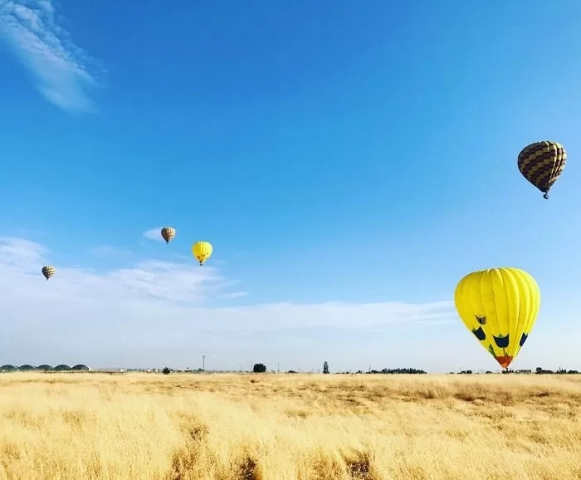 © C. Valdez
© C. Valdez
Alternate rhythm
The alternating rhythm in photography is where the image has two different rhythms. They can work together, providing structures that mirror each other. Or they can work against each other.
Alternating rhythms can bring harmony or discord to your images . The repetitive elements of a rhythm can direct our eyes in one direction. Then the second can either intersect or redirect. Their beats can match. Or they can counter and collide.
The image below is a perfect example of an alternative rhythm clash. We have a series of circles that draw the eye inward towards the center. But the shadows create a pattern of straight diagonal lines that cut through each circle. These lines force our eyes in a different direction.
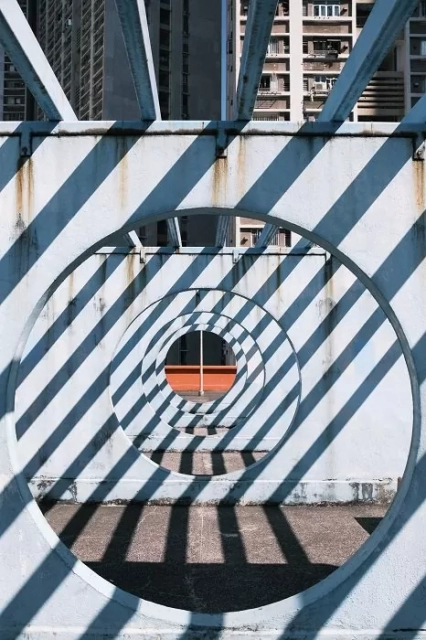 © Chi Hung Wong
© Chi Hung Wong
Progressive pace
A progressive rhythm in photography is above patterns that advance in the photo. They are repeated beats that form a progression in the picture.
These can be regular rhythms but with a change of perspective. The change in angle can help guide the viewer's gaze towards the subject. Or the progressive structure can be the subject.
A progressive pace in photography has a clear direction . The visual rhythm creates diagonal lines that cross the image, attracting the eye.
We can see it in the scene below. We have a line of harvesters working. They are all doubled over, working in a row. The pace this creates draws our attention down the line. When we look at the closest person, our natural reaction is to continue along the progression.
 © Deepak Kumar
© Deepak Kumar
Wavy rhythm
Ripple is another visual rhythm that we find in photography. This rhythm is about the soft shapes flowing through the images.
Undulating visual rhythm is common in landscape composition. We often see rolling hills rippling from foreground to background. It's a smooth visual rhythm that creates images with a gentle, harmonious feel.
In the landscape below, we see the undulating rhythm of the snowy hills. Each white mound leads us to another. There are no abrupt interruptions. We come smoothly to each beat of the rhythm.
 © Ricardo Gomez Angel
© Ricardo Gomez Angel
Broken rhythm
When it comes to rhythm in photography, breaking a steady beat can make a big impact . Repetition of a pattern can lull us into awe. But when that beat breaks, it gives a visual shock.
For photographic composition, breaking a steady beat can add emphasis. And it can create points of interest in your images. Breaking a beat can even highlight the beat in photography.
The following example shows two tractors breaking the rhythm of the rows of grain. We have two patterns on either side, each broken up by tractors. And, like drum fills, they add new shapes to the visual beat.
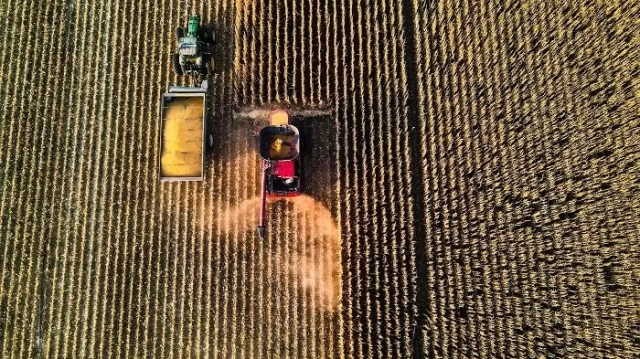 © Taylor Siebert
© Taylor SiebertConclusion
There are no hard and fast rules in rhythm photography . It's one aspect of photography that can strengthen your composition. It is about looking for patterns that lead or finding forms that echo .
Train your eye to look for repetition and progression. Find visual rhythms that beat and pulse through your frame. You can explore rhythm in street or landscape photography. You can even introduce rhythm into portraits.
When you subscribe to the blog, we will send you an e-mail when there are new updates on the site so you wouldn't miss them.
By accepting you will be accessing a service provided by a third-party external to https://www.insightadv.it/


































































Comments